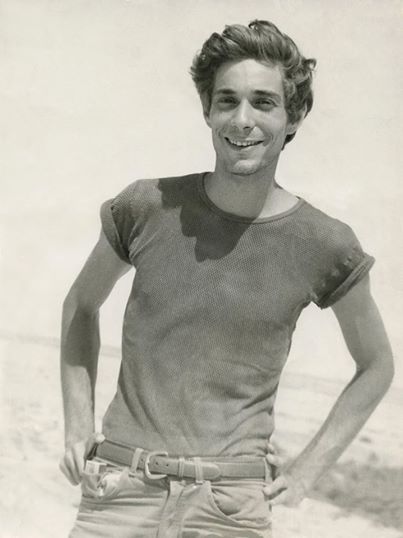 Last night, Maya Romanoff passed peacefully at home. His partner, Joyce, was with him throughout. They were both surrounded by loving family. Maya was as courageous, lucid and empathetic at the end of life as he was throughout his 72 years. He carved an original path in life and was guided by the idea that there truly is something new under the sun. Maya said that in striving to make beautiful things, he was “on the side of the angels”. Now at rest, he truly is.
Last night, Maya Romanoff passed peacefully at home. His partner, Joyce, was with him throughout. They were both surrounded by loving family. Maya was as courageous, lucid and empathetic at the end of life as he was throughout his 72 years. He carved an original path in life and was guided by the idea that there truly is something new under the sun. Maya said that in striving to make beautiful things, he was “on the side of the angels”. Now at rest, he truly is.
Maya Romanoff
The Innovative Spirit Impacting the World of Design
When Maya Romanoff lived the ultimate student experience at the University of California in Berkeley in the sixties, he probably never imagined that his studies in anthropology, archeology and art would lead him to where he is today: artist, inventor, and director of the Maya Romanoff Corporation; the leading manufacturer of innovative wall covering and surfacing materials impacting the world of design.
Maya’s journey began with post-university travels to such exotic places as North Africa, where he observed art as part and parcel of everyday life in the guise of usable, wearable art such as textiles. From that primal beauty he moved to the glamour of Paris’ couture houses, garnering practical business skills while appeasing his growing interest in textiles and functional art.
It was during Woodstock that Maya discovered the intriguing technique of tie-dye, and the spirit of innovation that continues to live in his work. His fascination with making things, using common materials to create uncommon art, and creating art through a hands-on experience was born.
“It all clicked,” explains Romanoff, “I was struck by the ingenuity of the tie-dye designs that I saw. At that moment, I had found my life’s work.”
Romanoff’s artistic epiphany led to intense experimentation with the technique, delivering gorgeous fabrics that swept earthy tie-dye into the realm of haute couture. Further work with resist-dye techniques led to a collection of beautifully designed clothing, aptly named Wearable Art, that sold in top retail establishments across the country, including Henri Bendel, Ultimo and I.Magnin. Romanoff’s reputation grew and soon he was besieged by requests for custom pieces, including a fantastic leather vest for rock idol Roger Daltry of The Who.
Romanoff’s attraction to textiles and unconventional materials as his medium of choice expanded and evolved. “Once I started working with fabrics and dyes, I knew what I wanted to do the rest of my life. I had painted and drawn, but I always saw myself in my work. I couldn’t stand it,” says Romanoff. “When I started working with natural dyes and materials I saw myself taken out of the work – it was liberating!”
In 1969 he established the Maya Romanoff Corporation to bring his artistic creations to profitable fruition. The Chicago based corporation has remained true to Maya’s founding vision: to transform modern design by combining ancient artistic techniques with the latest production technology, all with a keen regard for nature and environmental concerns.
As the company grew, Romanoff’s main focus became the development of unique production techniques, and the year 1976 marked Romanoff’s introduction of the first widely available handcrafted, resistant-dyed fabric and floor covering to the industry. Throughout the seventies Romanoff wore two hats, splitting his focus between business and art. As the art world became enamored with resist-dye techniques and textiles Romanoff received international acclaim and was repeatedly called upon to create exhibitions and environments that showcased fabrics as fluid works of art. Among his many outstanding exhibitions was New York’s Museum of Contemporary Arts’ 1972 Fabric Vibrations, the first to address this emerging contemporary American art form, before becoming an international exhibition.
As the corporation surged forward in the eighties, Romanoff continued to explore fabric as an expression of unbridled art, and continued to earn accolades for his efforts. “Anywhere a piece of fabric can go – whether or not it has ever been there before – is where I put my textiles,” states Romanoff. Indoor or outdoor, draping buildings’ facades or flowing internally, Romanoff’s art on a massive, moving scale created a stir. The Chicago Sun-Times building got a shot of adrenalin when Romanoff suspended 28 brightly colored ribbons from the seventh floor terrace down to the Chicago River, festooning the industrial structure in warm, vibrant colors. Two of his many other noteworthy outdoor projects included Sleeves of Spring, his 1980 exhibit that involved draping Belvedere Castle in New York’s Central Park and 1982’s God’s Eye, which similarly swathed the entire facade of the Chicago Cultural Center.
Never content to stick with the status quo, Romanoff sought inspiration and education from other countries and cultures. A trip to Japan uncovered an ancient method of papermaking that could be re-worked and translated into a modern process that could make more of his more avant-garde wall covering concepts marketable. Fortunately, Romanoff states, “I never cared how difficult things were to make,” as it took over a year and a half, and countless revisions, to perfect the production process.
Romanoff’s endeavors have paid off, bringing the corporation and himself clearly into focus as a prime resource for top interior designers and architects. He credits his wife Joyce with being the strong business push behind his artistic efforts. “ We balance each other, we’re a great team,” explains Romanoff, “and that’s as vital in business as it is in life.” Since joining him in 1989 she has elevated the already successful business by
increasing its visibility, fine-tuning product consistency and stepping up the volume of production, all while maintaining the integrity of the corporation and Maya’s vision.
In this rarified atmosphere Romanoff leads, receiving countless awards over the years, including The International Furnishings and Design Association’s Trailblazer Award, Metropolitan Home’s Top 100 Designs 2004, NEOCON’s Best of Show, and International Contemporary Furniture Fair’s Editor’s Award. Romanoff’s ability to step beyond the ordinary, and his affinity for organic beauty has led to the creation of delightful and unexpected surface coverings for walls and floors.
“To work with Maya Romanoff is a privilege,” said Albert Hadley, of Parish-Hadley Inc., arbiter of design excellence in interior design.
While fabrics, vinyl and wood have been used extensively in prior collections, lately Romanoff has given free reign to his love of natural, genuine materials. Gold leaf, mica, grass and bamboo are part of the mix, but perhaps the most captivating introduction of late has been Beadazzled, a collection of wall coverings amazingly made from tiny glass beads. The collection has not only has taken the interior furnishings world by storm, but has earned a prestigious, permanent place in the Cooper-Hewitt National Design Museum.
What’s next in line for this Renaissance man and his successful company? The challenge of consistently coming up with new ideas and maintaining the integrity of existing products is what drives him on. “Making one beautiful thing is easy – making something beautiful over and over again is what’s difficult. But that’s what I thrive on,” notes Romanoff.
